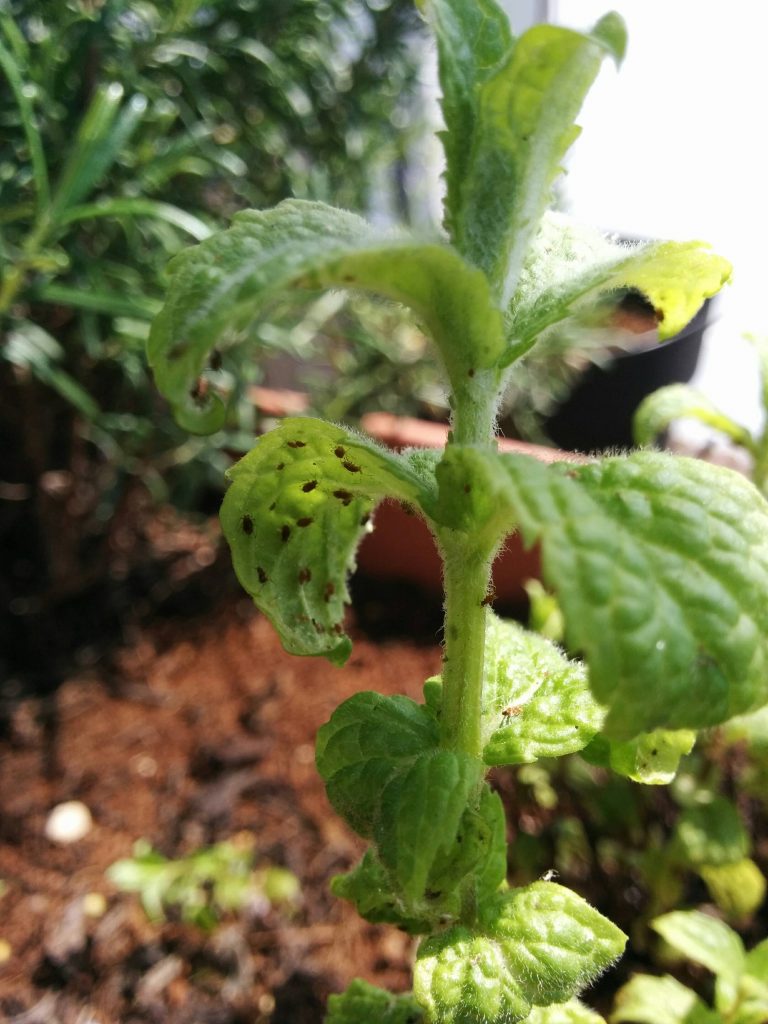Are you wondering how to get rid of bugs on a mint plant? If so, you’ve come to the right place. My mint plant has been victim to various bug infestations, so I’ve learned a few effective strategies to keep my plant healthy and bug-free. In this article, I’ll explain how you can use natural sprays, beneficial bugs, and other pest control methods to get rid of bugs on a mint plant.
Types of Bugs that Eat Mint
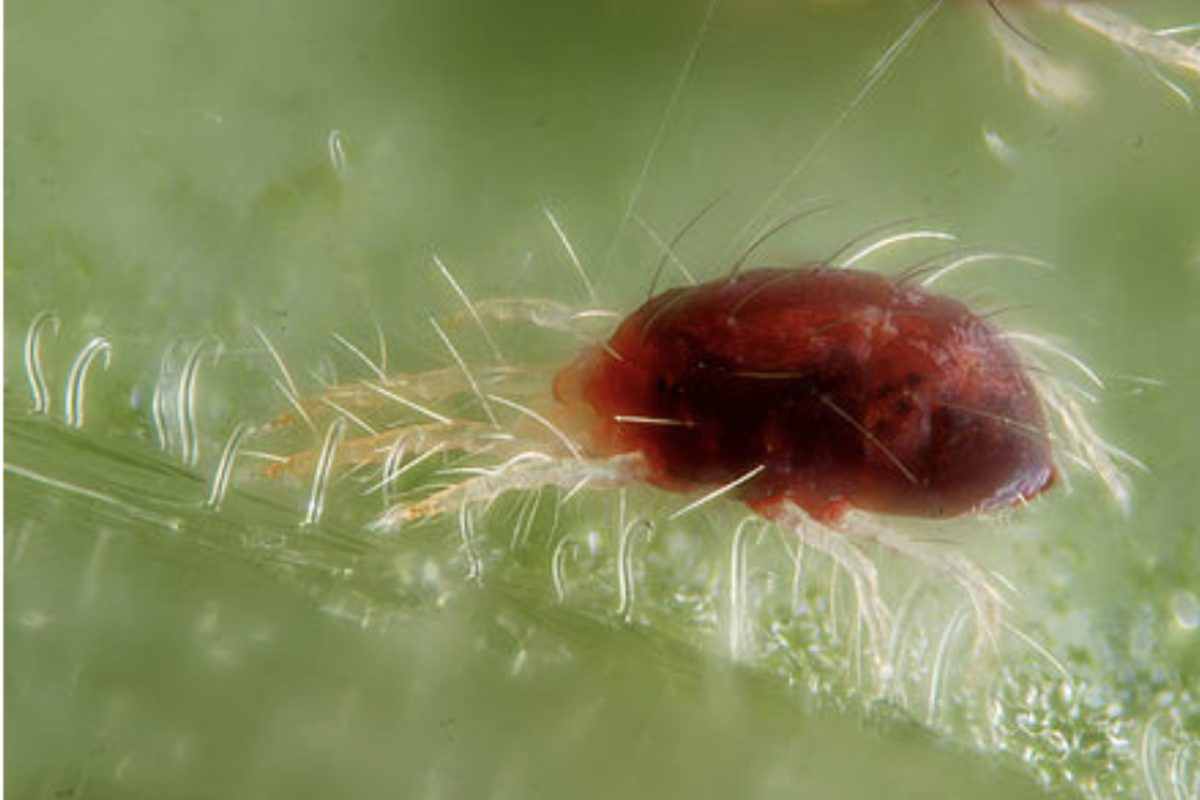
There are a few types of bugs that can feed on mint plants. These include aphids, whiteflies, mealybugs, and spider mites. Aphids are typically small and pear-shaped, and come in many colors. They typically feed on the underside of leaves and can cause yellowing, curling, and stunted growth on mint plants. Whiteflies are tiny white insects that often appear in clusters and feed on the underside of leaves, causing them to yellow and curl. Mealybugs are small, fuzzy, oval-shaped insects that feed on the stems and leaves of mint plants. Finally, spider mites are tiny spider-like pests that feed on the underside of the leaves, causing stippling and yellowing.
Symptoms of Bug Damage
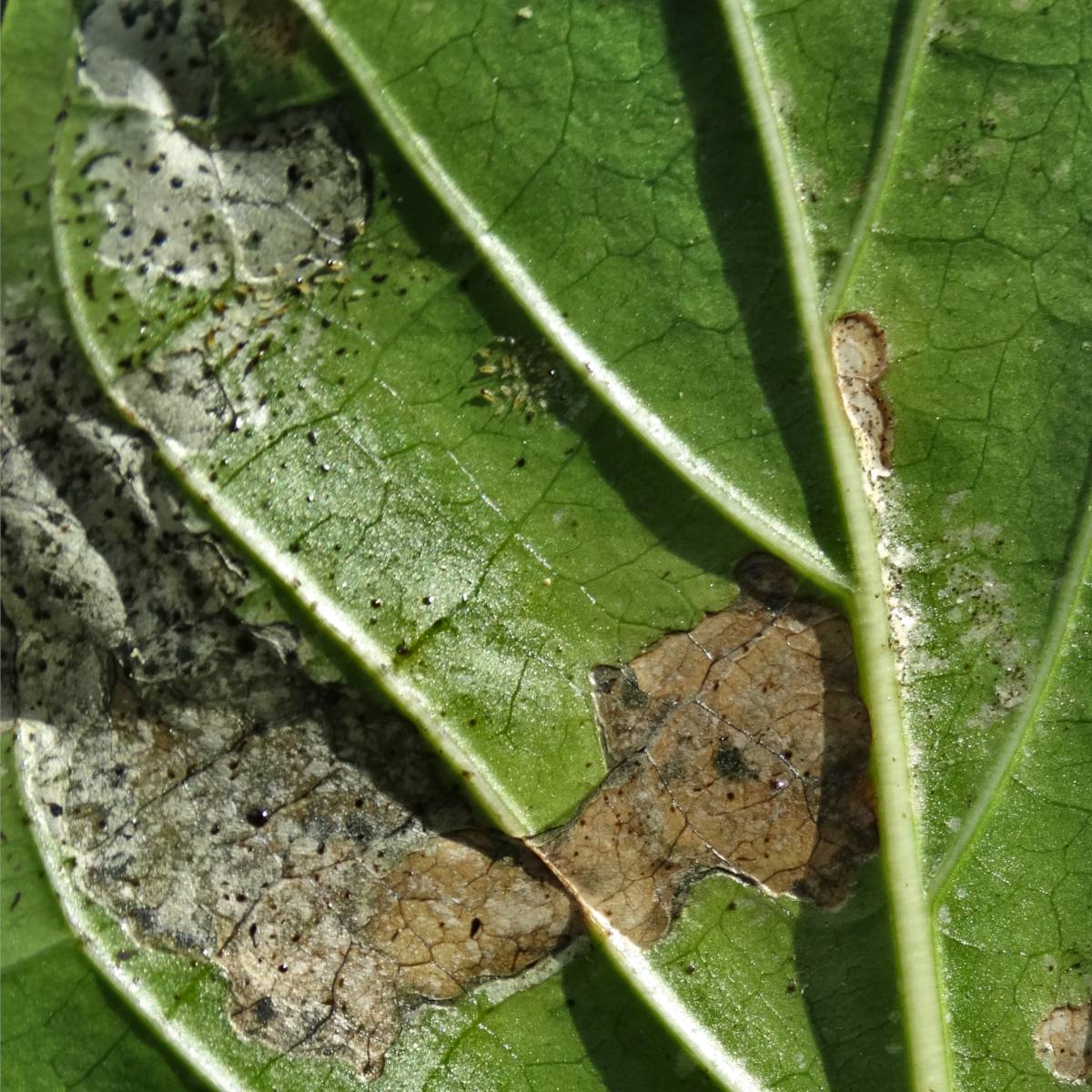
Identifying the presence of bugs on your mint plant is essential to get rid of them. The most common symptoms of bug damage are discoloration, wilting, and yellowing of the leaves. Another tell-tale sign of bug damage is the presence of small holes in the leaves, caused by insects feeding on the leaves. In extreme cases, you may also notice the presence of black or brown spots on the leaves, which are signs of fungal infection due to bug damage.
| Symptom | Signs |
|---|---|
| Discoloration | Leaves change to yellow, brown, or red |
| Wilting | Leaves droop or hang down |
| Yellowing | Leaves turn yellowish |
| Small holes | Presence of small holes in leaves |
| Black/Brown spots | Presence of black or brown spots on leaves |
If you notice any of these signs on your mint plant, it is likely that the plant is infested with bugs. Taking quick action to get rid of them is important to save the plant from further damage.
Prevention

To prevent bugs from infesting on my mint plant in the future, I take a few simple steps. I make sure to keep the leaves free of dirt and debris and prune away any dead or dying foliage. I also regularly inspect the plant for signs of infestation, such as eggs, and treat accordingly with a gentle insecticide. Additionally, I make sure to avoid over-watering and provide adequate sunlight, as both can contribute to bug infestations. Finally, I keep the plant away from other plants that may be infested, as bugs can spread easily.
Natural Insecticides
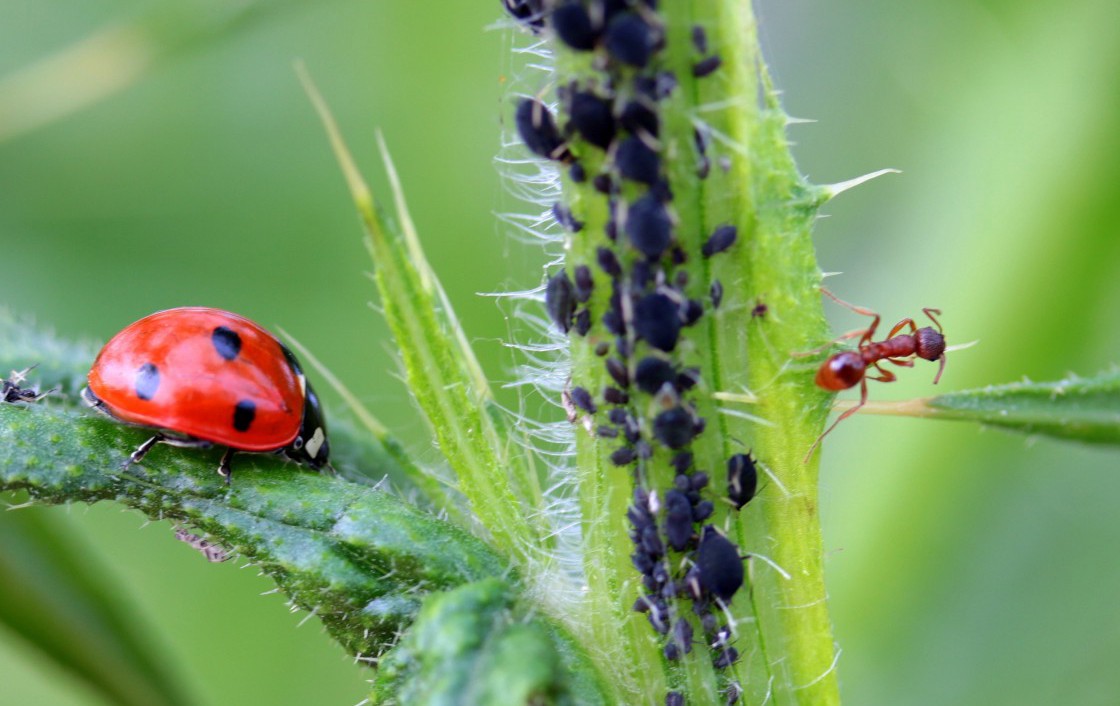
Using natural insecticides such as neem oil or pyrethrum are an effective way to get rid of bugs on a mint plant. Neem oil has a compound called azadirachtin which is derived from neem trees and is a naturally occurring insecticide. Pyrethrum is derived from certain types of chrysanthemums and has a compound called pyrethrin which is a natural insecticide. Here are the steps to follow when using natural insecticides:
- Mix the neem oil or pyrethrum with water in a spray bottle according to the manufacturer’s instructions.
- Spray the mint plant thoroughly, including the underside of the leaves and the soil around the base of the plant.
- Repeat the process every 7-10 days until the bugs are gone.
- Be careful not to spray the plant too often as this can damage the plant.
It is important to note that natural insecticides can be toxic to humans and animals so care should be taken when using them.
Chemical Insecticides
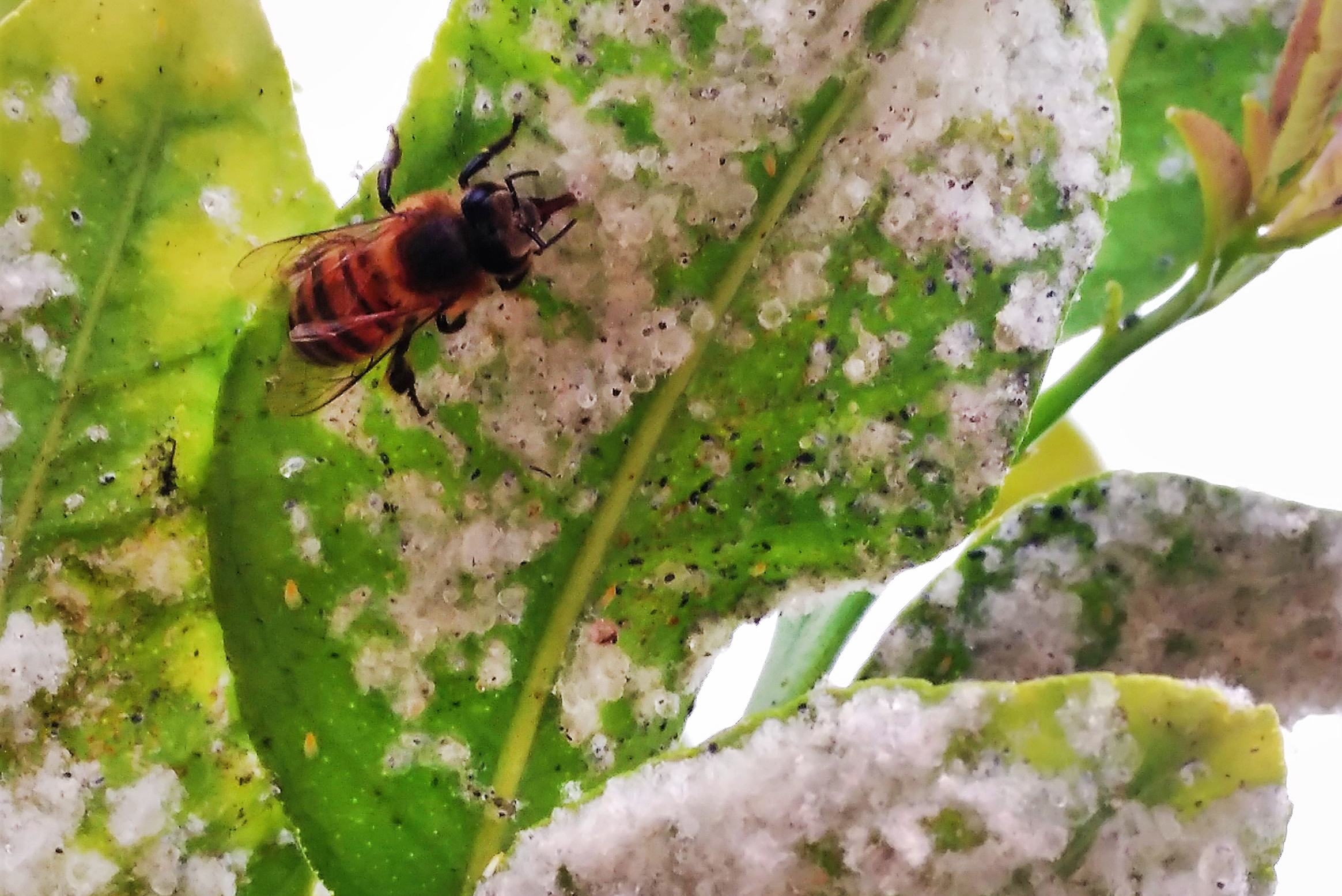
I have used chemical insecticides to get rid of bugs on my mint plant. Chemical insecticides come in many different forms such as sprays, dusts, and granules. Sprays can be used to directly target and kill bugs that are infesting the plant. Dusts are best for getting into small crevices and cracks to ensure the bugs are thoroughly eradicated. Granules can be spread on the soil around the plant to create a protective barrier against bugs.
| Type | Advantages | Disadvantages |
|---|---|---|
| Spray | Directly targets and kills bugs | Can be difficult to apply evenly |
| Dust | Gets into small crevices and cracks | Can be messy and difficult to apply |
| Granules | Creates a protective barrier around the plant | Can be washed away when watered |
When using chemical insecticides, it is important to read and follow the instructions on the packaging. It is also important to use the correct amount and to apply the insecticide uniformly. Too much insecticide can be harmful to the plant and can cause health issues if ingested.
Neem Oil
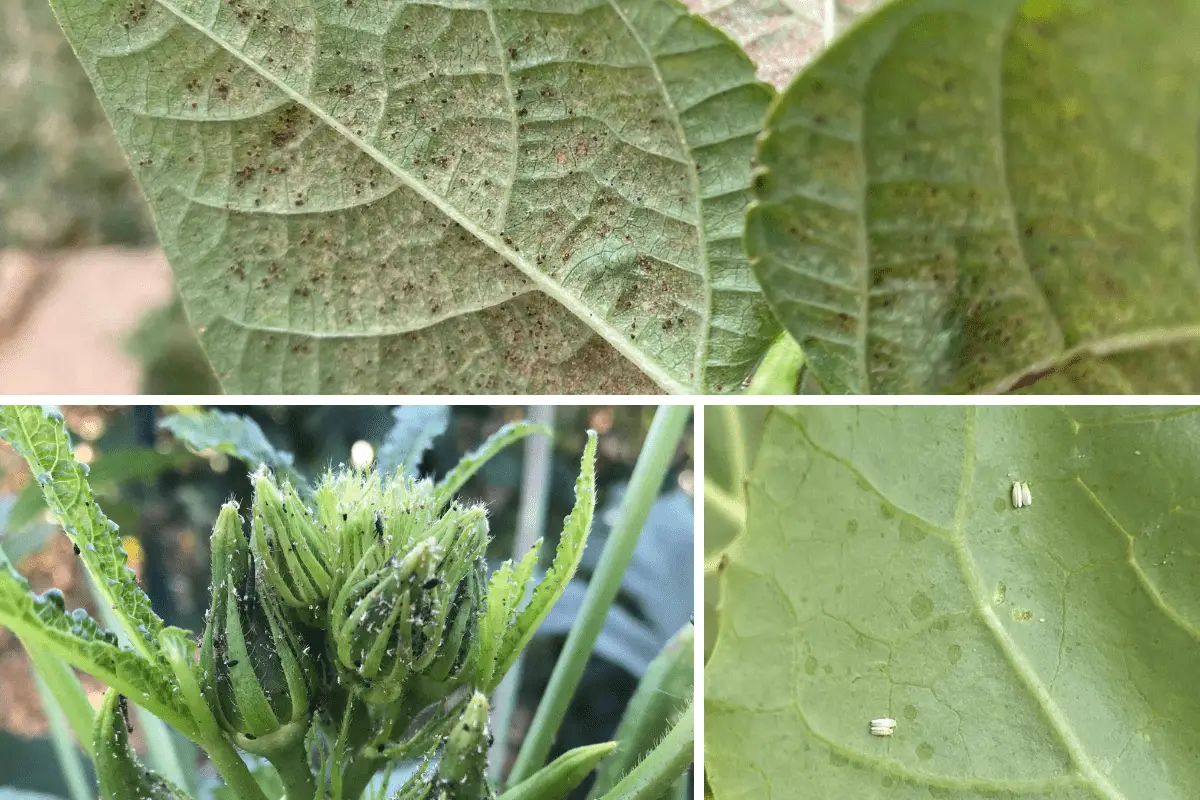
An effective and natural pest-control method is to use neem oil. It is an extract from the neem tree and is an effective repellent for many insects. Neem oil is safe to use on mint plants and won’t cause any harm to the plant.
| Benefits | How to use |
|---|---|
|
|
Neem oil is an effective and natural way to protect your mint plants from bugs. The solution can be easily mixed and used on the plants. It’s important to repeat the application every 7-10 days to ensure the bugs stay away.
Horticultural Oils
- Mix insecticidal or horticultural oil with water in a spray bottle, following the instructions on the label.
- Spray the mint plant thoroughly, focusing on the underside of the leaves where the bugs are most likely to be.
- Apply the oil-water mixture regularly, once a week or every few days, until the bugs are gone.
- Be sure to spray the undersides of the leaves as well as the top.
- If the bugs are not gone after several applications, consider using a stronger insecticide.
Companion Planting
One of the best ways to get rid of bugs on a mint plant is companion planting. This is when you plant certain types of plants near each other, as they can help protect each other from pests. Some plants, such as marigolds, garlic, and onions, can help keep pests away from the mint.
| Plant | Benefits |
|---|---|
| Marigolds | Repel pests and create a barrier around mint |
| Garlic | Repel aphids, spider mites, and more |
| Onions | Repel aphids and other pests |
By planting these companion plants around the mint, you can reduce the number of pests and keep the plant healthy. Additionally, the mint plant can act as a companion plant for other plants, protecting them from pests.
Frequently Asked Questions
What are the most common bugs that eat mint plants?
Mint plants are prone to attack by a variety of pests, including aphids, mealybugs, slugs, and spider mites. Aphids are small, soft-bodied insects that feed by sucking plant juices, often causing discoloration, stunted growth and leaf distortion. Mealybugs are small, white, fuzzy insects that feed on the sap of the mint. Slugs feed on young mint leaves, leaving behind ragged holes. Spider mites are tiny arachnids that feed on the underside of the leaves, causing yellow stippling and webbing.
What are the best methods for preventing bugs from eating mint plants?
Cover the mint plants with netting or fabric row covers to keep bugs from accessing the plants. Utilizing natural predators, such as ladybugs and praying mantises, can help to keep bug populations in check. Introducing beneficial nematodes to the soil can also help prevent insect damage. Spraying neem oil or other organic insecticides can also help to deter bugs from eating the mint plants. Finally, regular pruning and removing any diseased or infested leaves can help keep bug populations under control.
How can I identify the bugs that are attacking my mint plant?
Examine the plant’s leaves and stems for signs of damage or discoloration. Look for holes or patches of missing or eaten away foliage, particularly along the edges of the leaves. Common pests that may attack mint plants include aphids, Japanese beetles, and sawflies. Aphids are tiny, pear-shaped insects usually found in clusters, while Japanese beetles are larger, greenish-brown insects with copper-colored wings. Sawflies are slender, black or yellow and black insects with yellow or orange markings.
Is there an organic solution for getting rid of bugs on mint plants?
Yes, there are organic solutions for getting rid of bugs on mint plants. These include using natural predators such as ladybugs and praying mantis, or spraying the plants with neem oil or soapy water. Neem oil is a natural pesticide that is safe for humans and pets, and has been known to be effective in controlling a range of bug species. Soapy water can be used as a natural insecticide and is often used to kill aphids, caterpillars, whiteflies, and other small bugs. Additionally, using diatomaceous earth, a natural abrasive and insecticide, can be effective in getting rid of bugs on mint plants.
What are the most effective strategies for keeping mint plants healthy and bug-free?
Maintain a clean garden by regularly removing weeds and debris and use mulch or straw to prevent pests from accessing plants. Use appropriate fertilizers and soil amendments to ensure proper nutrition for the plants. Prune regularly to remove dead or damaged leaves. Inspect plants regularly for signs of pests and take action quickly if detected. Utilize natural predators such as ladybugs to keep pests away. Spray diluted solutions of neem oil, insecticidal soap, or horticultural oil to control infestations.
Conclusion
My mint plant is now free of bugs and I’m feeling confident that it will remain healthy and pest-free for years to come. I have learned that by taking a few simple steps, I can keep my mint plant from being overrun by pests. I have also learned that it is important to monitor my plant regularly and take action if I notice any signs of bugs. I am now more aware of the potential dangers that pests can pose to my mint plant and I am armed with the knowledge and strategies to protect it.
